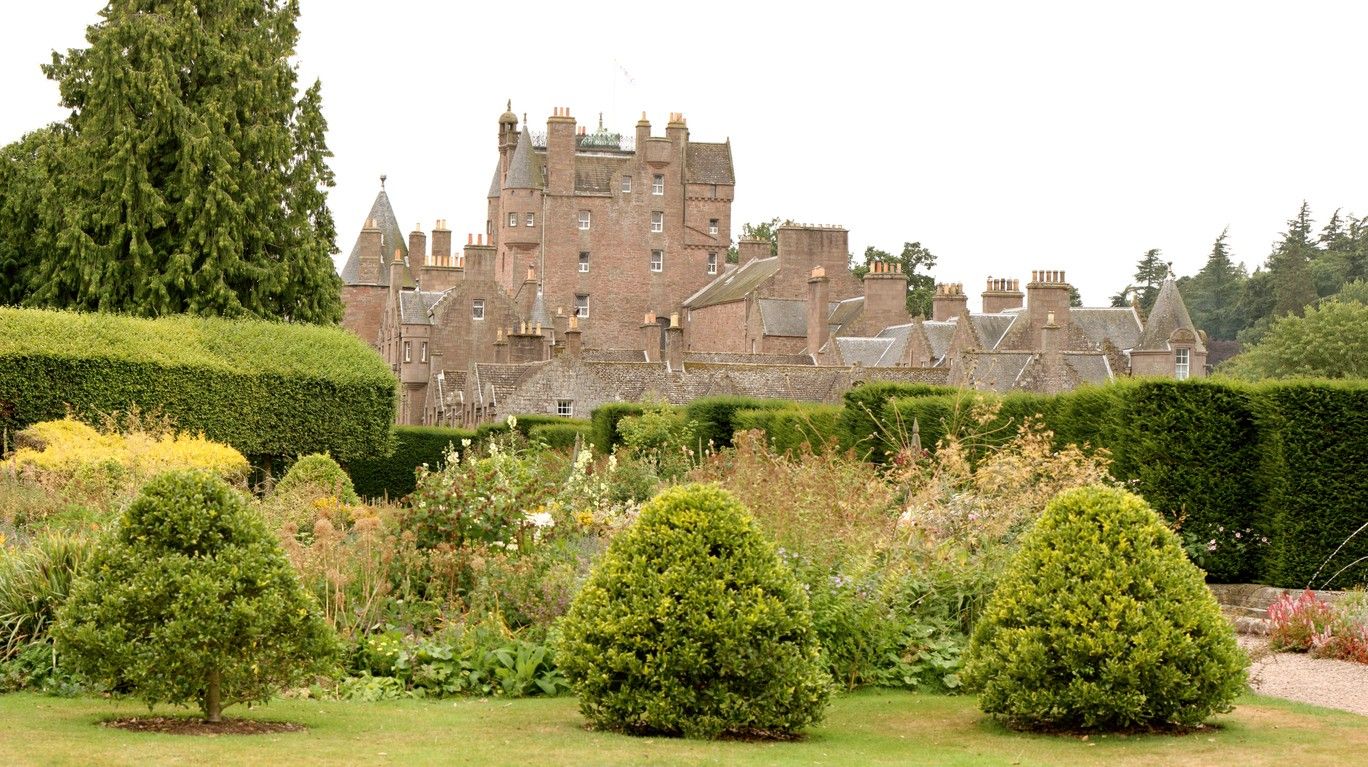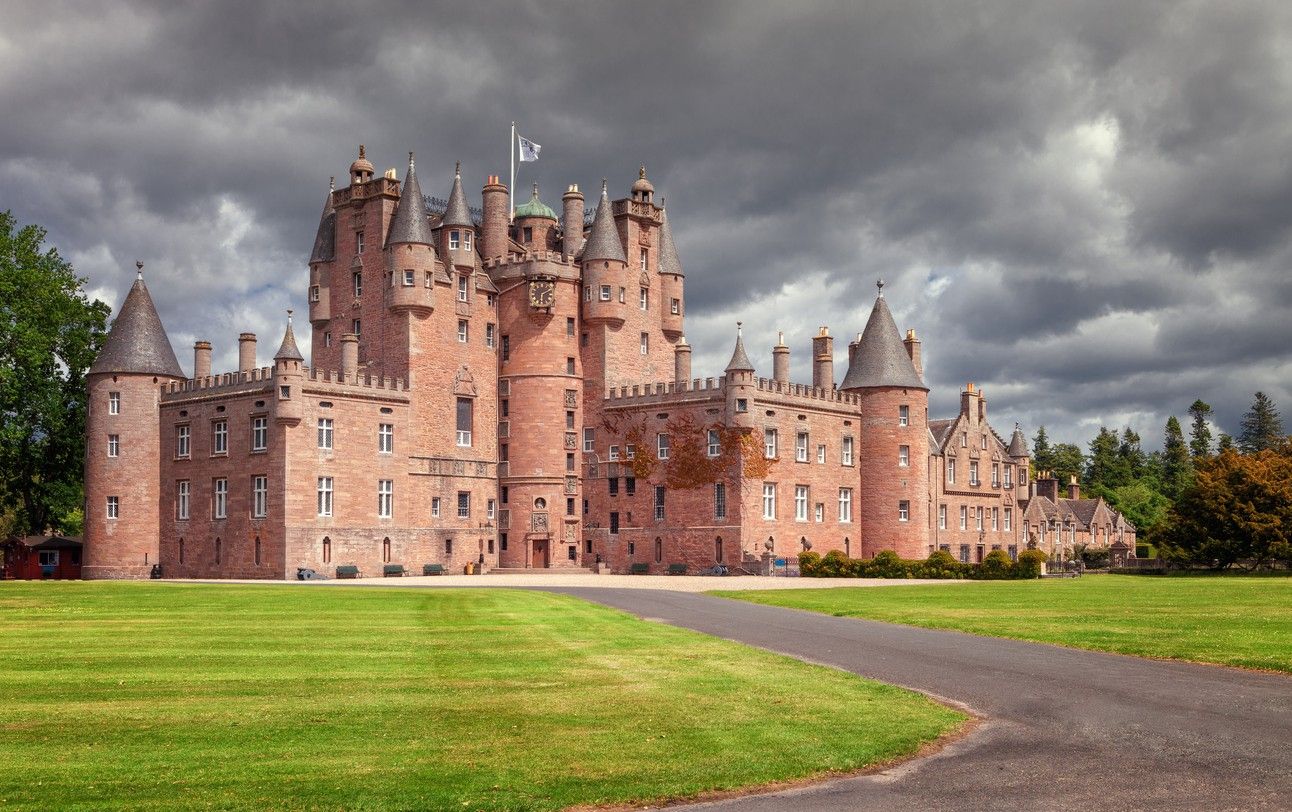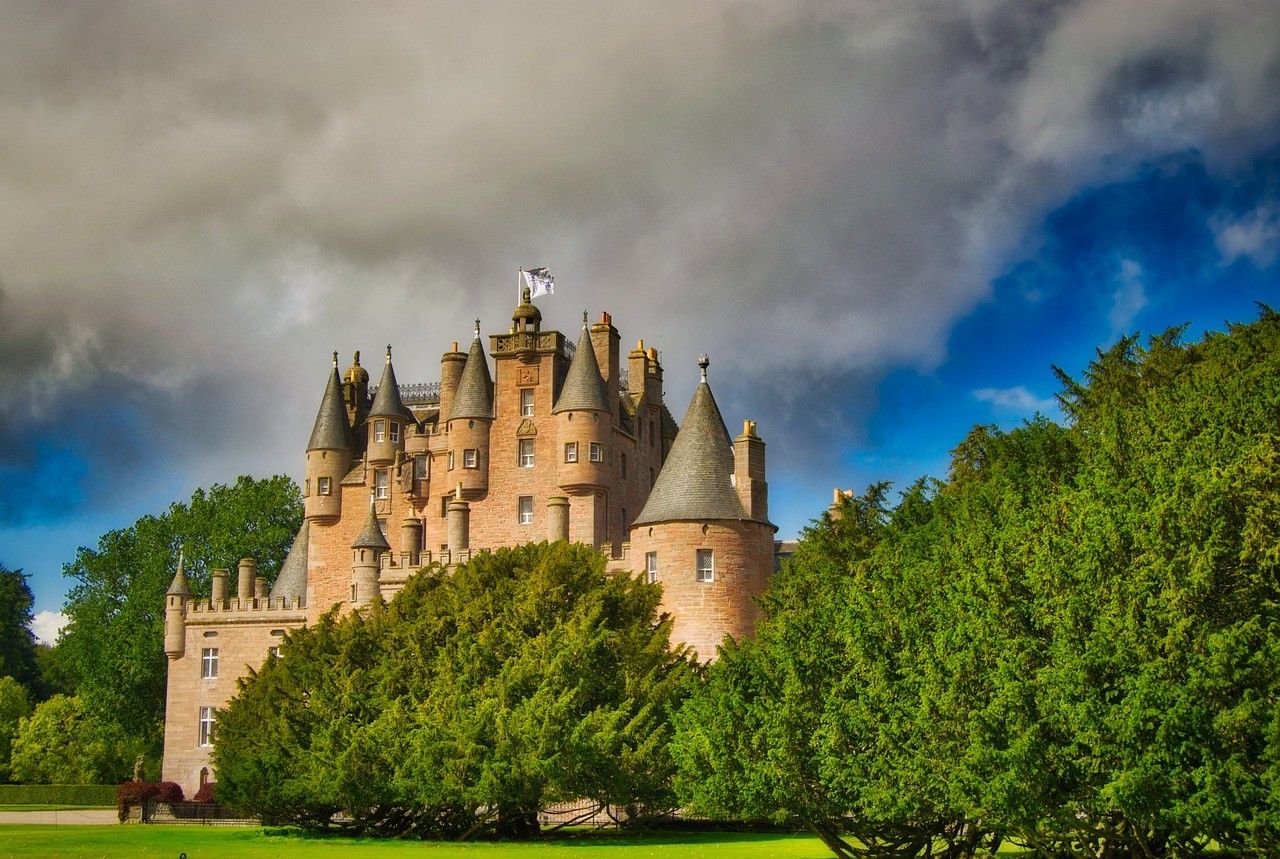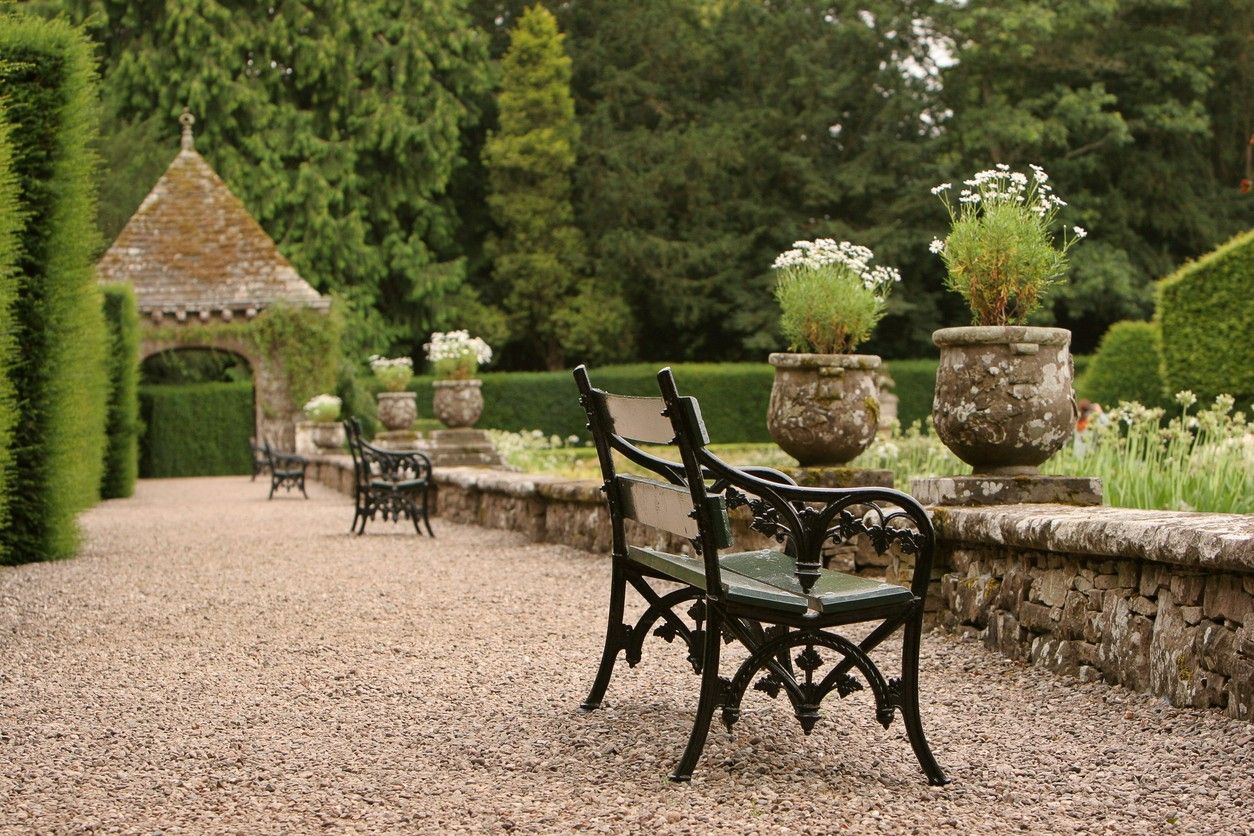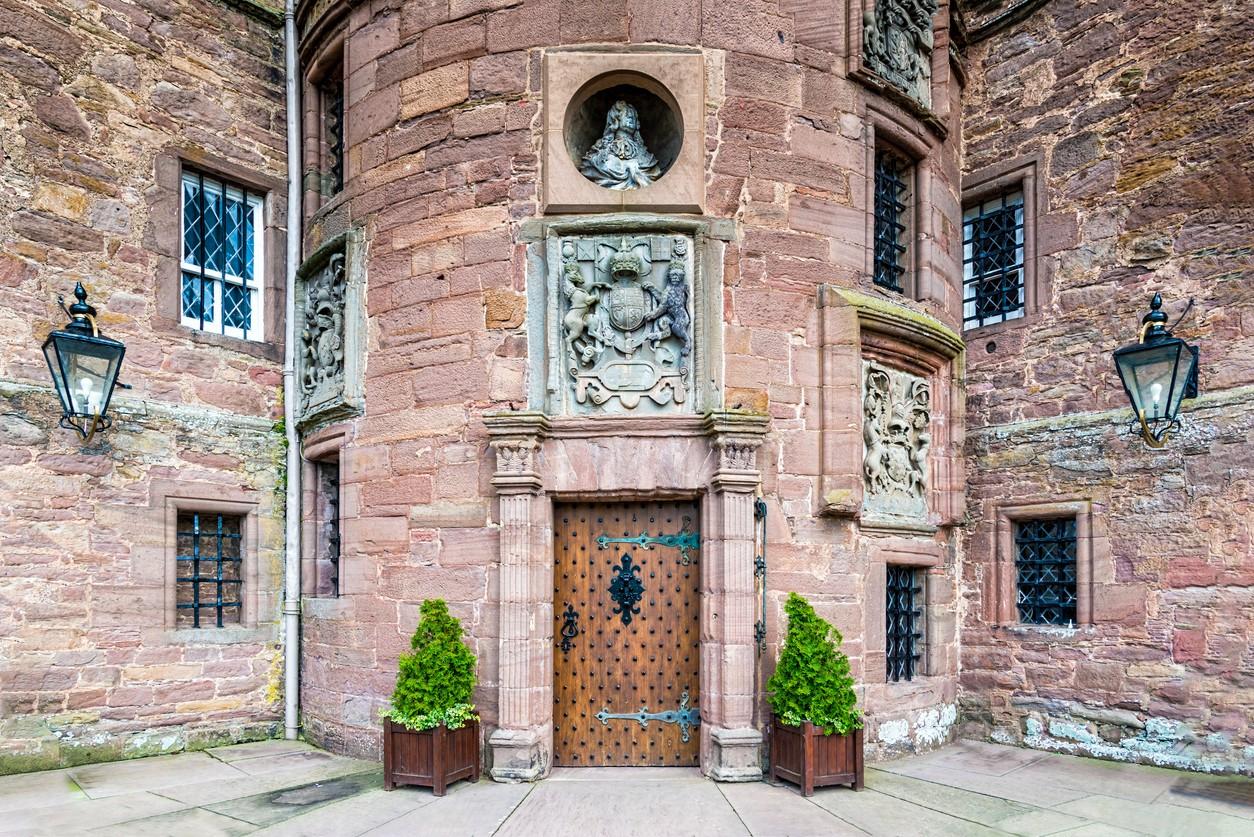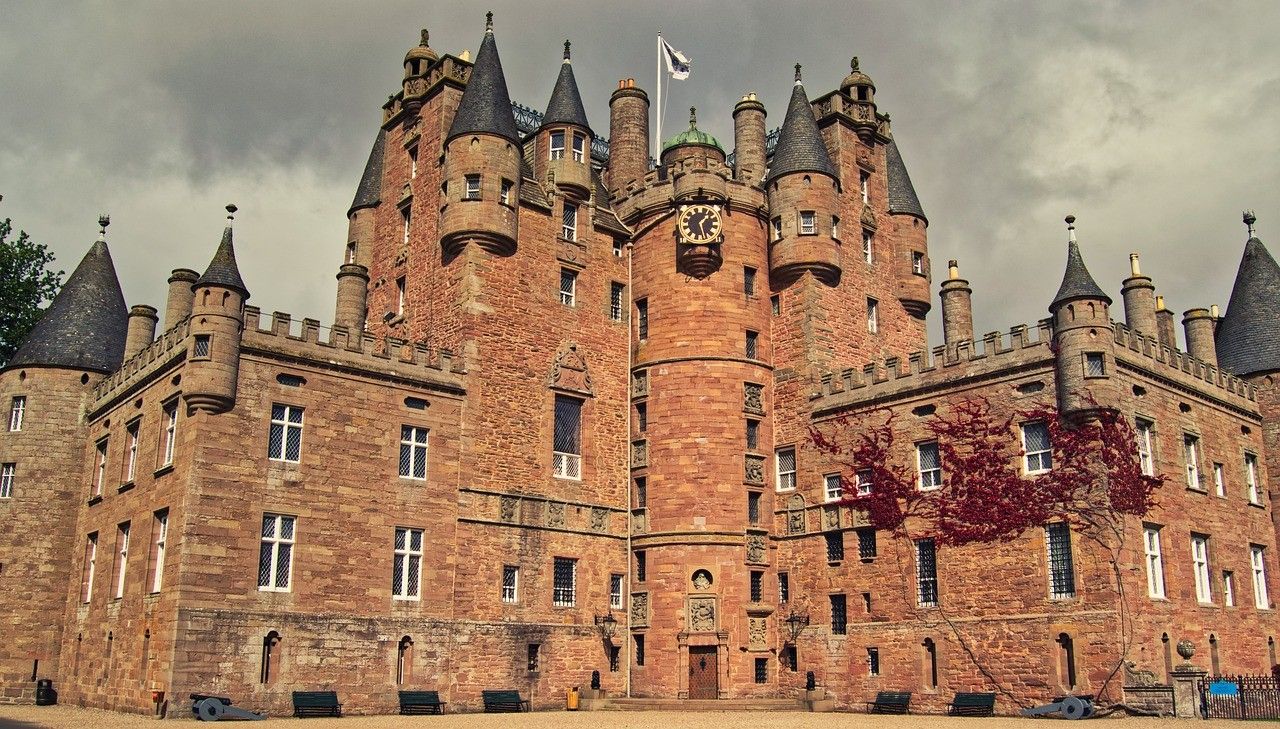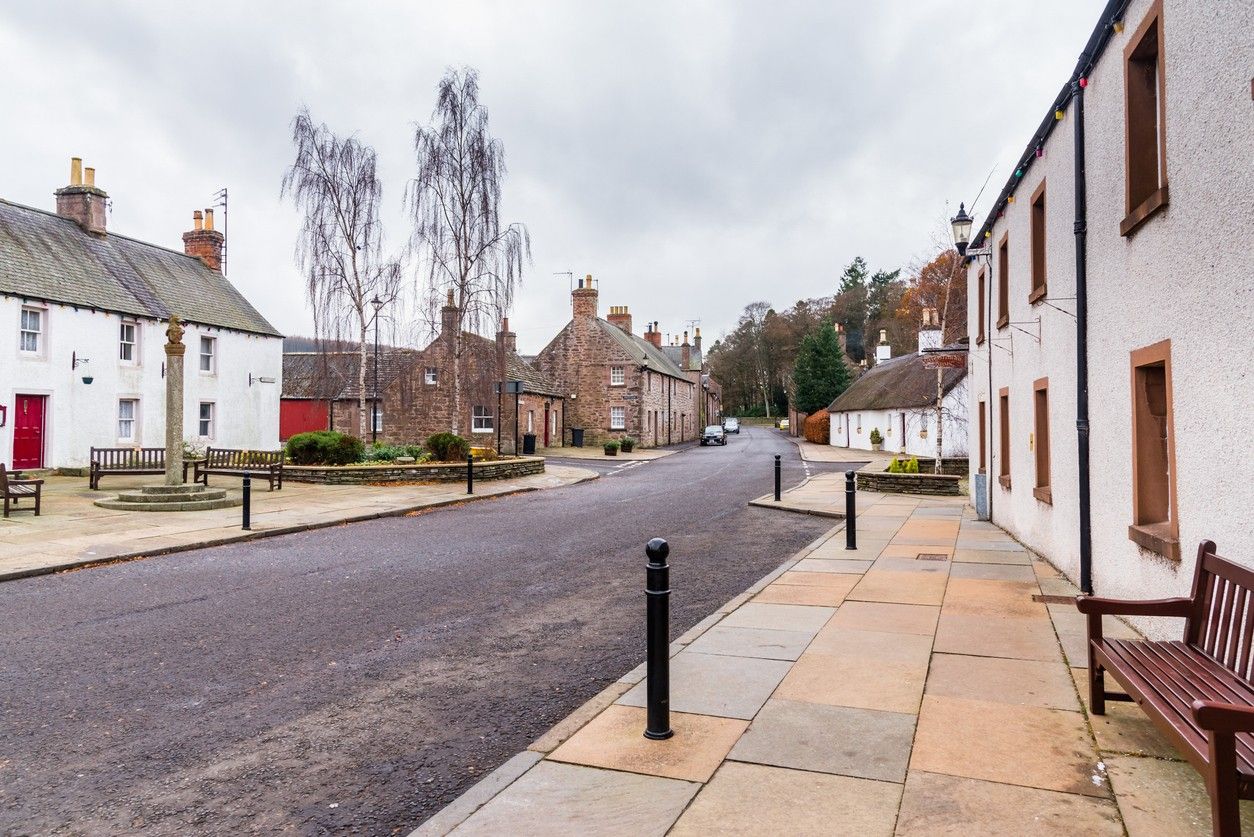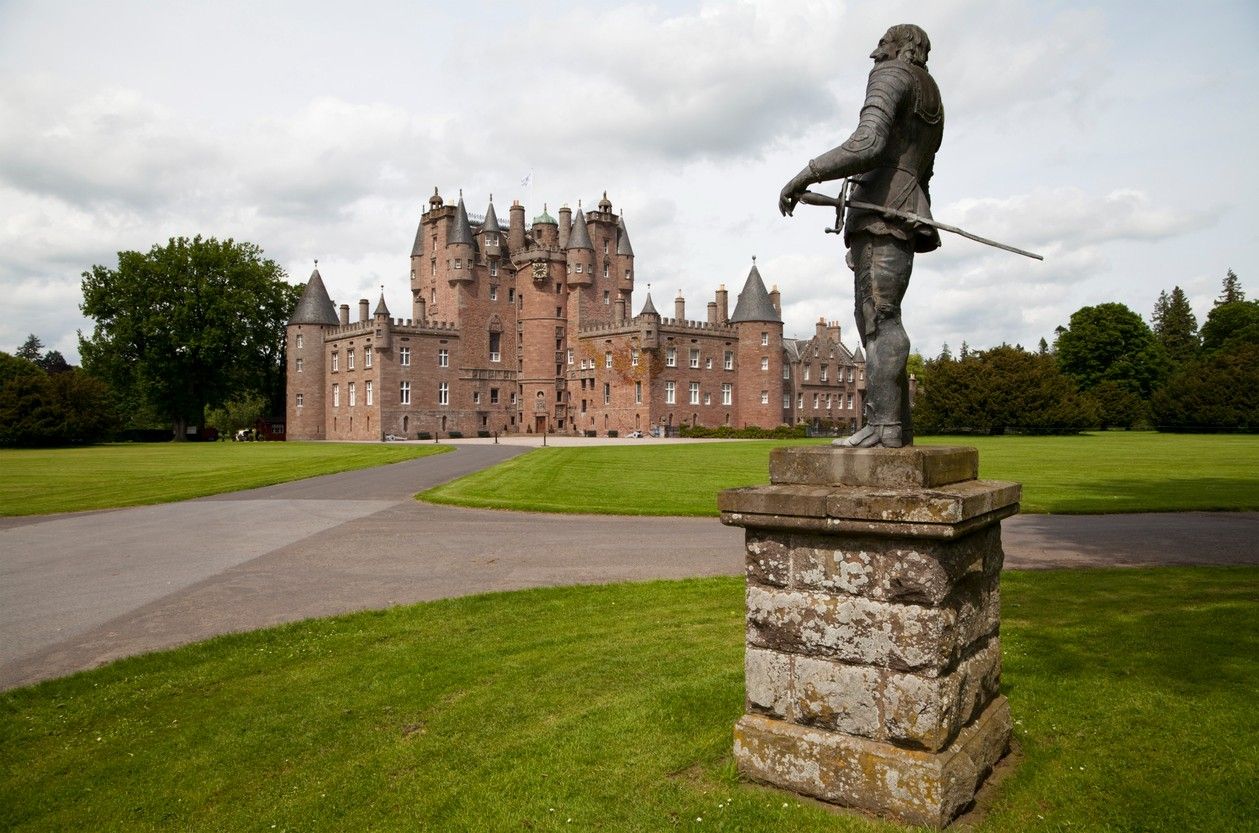Glamis Castle, a stunning architectural marvel, stands proudly in the heart of Angus, Scotland. Glamis Castle has been the ancestral seat of the Earls of Strathmore and Kinghorne for over 650 years, and its history is inextricably linked with that of Scotland itself. From its early beginnings as a hunting lodge in the 14th century to its current status as a beloved tourist attraction, the castle has witnessed the rise and fall of kings, the changing tides of politics, and the evolution of British society. The castle's grandeur is evident from the moment one lays eyes upon it. The imposing towers, turrets, and battlements speak to its former role as a fortified stronghold, while the elegant Renaissance-style facades and sprawling gardens reflect the refined tastes of its later inhabitants. Inside, the castle is a treasure trove of art, antiques, and architectural marvels, each with its own story to tell. But Glamis Castle is more than just a beautiful building; it is a place where history comes alive. From the tragic tale of Lady Janet Douglas, burned at the stake for witchcraft, to the legend of the Monster of Glamis, a deformed child hidden away in a secret chamber, the castle is steeped in mystery and intrigue. With its royal connections, including being the childhood home of Queen Elizabeth The Queen Mother, Glamis Castle has played a significant role in shaping the course of British history. So join us on a journey through time as we uncover the secrets and marvels of one of Scotland's most iconic and beloved landmarks, Glamis Castle.
History of the Castle
The origins of Glamis Castle can be traced back to the 14th century when it was founded by the Lyon family in 1372. However, there is evidence to suggest that a much earlier hunting lodge existed on the site before the construction of the current castle. The castle's history is closely intertwined with that of the Lyon family, who later became the Earls of Strathmore and Kinghorne. The Lyons have called Glamis Castle their ancestral seat for over 650 years. Throughout its long history, the castle has undergone numerous renovations and additions, reflecting the changing tastes and needs of its inhabitants. The earliest parts of the castle date back to the 14th century, while significant additions and alterations were made in the 17th and 18th centuries.
One of the most notable historical events associated with Glamis Castle is its connection to the tragic story of Lady Janet Douglas, wife of the sixth Lord of Glamis, John Lyon. In 1537, Lady Janet was accused of practising witchcraft against King James V of Scotland. Despite the lack of evidence, she was convicted through false testimonies and burned at the stake. Today, her spirit is believed to haunt the castle as the Grey Lady, often seen in the family chapel. Another significant figure in the castle's history is Alexander Lindsay, the fourth Earl of Crawford, also known as "Earl Beardie." He was infamous for his drinking and gambling habits, and legend has it that he lost his soul to the Devil in a card game at Glamis Castle. It is said that his ghostly presence can still be felt in the castle, accompanied by the sounds of yelling, swearing, and rattling dice.
The castle is also famous for its association with the legend of the "Monster of Glamis." Thomas Bowes-Lyon, the eldest son of the 11th Earl of Strathmore, was born badly deformed in 1821. Records show that he died on the same day he was born, but many believe he survived and was kept hidden from the public eye due to his appearance. It is rumoured that he haunted the grounds and parapets of the castle, and his rooms were allegedly walled off after his death. Throughout its history, Glamis Castle has witnessed the lives and events of countless generations of the Lyon family. It has served as a home, a fortress, and a place of intrigue, forever etching its place in Scottish history and folklore. Today, the castle stands as a testament to the enduring legacy of the Earls of Strathmore and Kinghorne and the fascinating tales that have shaped its identity over the centuries.
Exploring the Castle Grounds
The castle is surrounded by over 14,000 acres of stunning gardens and grounds. Visitors can stroll through the beautifully manicured Italian Garden, the Nature Trail, and the Walled Garden, which is home to a wide variety of plants, flowers, and trees. The grounds also feature many sculptures and monuments, including the stunning 17th-century sundial.
The Macbeth Trail
The Macbeth Trail at Glamis Castle is a fascinating journey that explores the castle's connection to Shakespeare's famous tragedy, Macbeth. While the play itself is fictional, it is believed that Shakespeare drew inspiration from the real-life history of the castle and the Thane of Glamis, a title held by the Lyon family. The trail takes visitors through various locations within the castle and its grounds that are associated with the play. One of the most significant spots is the Duncan's Hall, named after the ill-fated King Duncan in the play. It is here that Macbeth, driven by his ambition and the prophecies of the three witches, is said to have murdered the king in his sleep.
Another notable location on the trail is the Cawdor Room, which shares its name with the title bestowed upon Macbeth by King Duncan in the play. The room features a stunning 17th-century fireplace and intricate plasterwork, providing a glimpse into the opulence of the castle's interior. The trail also includes a visit to the Macbeth Stone, a large boulder located on the castle grounds. According to legend, this is the spot where Macbeth is said to have met the three witches who prophesied his rise to power and eventual downfall.
The Royal Apartments
The Royal Apartments at Glamis Castle are a testament to the castle's long-standing connection with the British royal family. These lavishly decorated rooms have hosted numerous royal guests over the centuries, including King George V and Queen Mary, as well as Queen Elizabeth II and the Duke of Edinburgh. The apartments are filled with priceless works of art, antique furniture, and exquisite tapestries that showcase the wealth and taste of the Earls of Strathmore and Kinghorne. Visitors can marvel at the intricate details of the plasterwork ceilings, the grand fireplaces, and the meticulously crafted furnishings that adorn each room. One of the most impressive features of the Royal Apartments is the extensive collection of portraits that line the walls. These paintings depict various members of the Lyon family, as well as notable figures from Scottish history, such as King James V and Mary, Queen of Scots.
The Duncan's Hall
The Duncan's Hall, named after the ill-fated King Duncan from Shakespeare's Macbeth, is one of the most impressive rooms in Glamis Castle. The hall features a magnificent 17th-century ceiling, adorned with intricate plasterwork and heraldic emblems that showcase the rich history of the Lyon family. The hall is also home to many important portraits, including those of King James V and Mary, Queen of Scots. These paintings serve as a reminder of the castle's close ties to the Scottish monarchy and the significant role it has played in the country's history. In addition to its artistic and historical significance, the Duncan's Hall is also known for its acoustic properties. The room's unique design allows for sound to travel in unusual ways, creating an eerie atmosphere that adds to the castle's mystique.
The Chapel
The chapel at Glamis Castle is a beautiful and serene space that has served as a place of worship for the Lyon family for centuries. Dating back to the 16th century, the chapel features stunning stained glass windows and intricate wood carvings that showcase the skill and craftsmanship of the artisans who created them. One of the most notable features of the chapel is the altar, which is made of intricately carved oak and bears the coats of arms of the Lyon and Bowes-Lyon families. The altar is flanked by two impressive stained glass windows that depict scenes from the life of Christ. The chapel is still used for regular services and is a popular venue for weddings and other special events. Its peaceful atmosphere and beautiful surroundings make it a favourite spot for visitors to the castle, offering a moment of quiet reflection amidst the grandeur of the castle's other rooms and spaces.
Legends and Mysteries
The Monster of Glamis
One of the most enduring legends associated with Glamis Castle is that of the Monster of Glamis. The story revolves around the alleged existence of a severely deformed child born into the Lyon family in the early 19th century. According to the legend, the child believed to be Thomas Bowes-Lyon, was born with severe physical abnormalities and was kept hidden away from the public eye in a secret chamber within the castle. The legend of the Monster of Glamis gained significant traction in the late 19th and early 20th centuries, with various accounts and theories circulating about the nature of the child's deformities and the reasons for his concealment. Some stories claimed that the child was born with a massive, misshapen head, while others described him as having a grotesquely twisted body and inhuman features. Despite the lack of concrete evidence, the legend persisted, fueled by the secrecy and mystery surrounding the Lyon family and the castle itself. Some accounts even suggested that the monster was not a single individual, but a series of deformed children born into the family over generations, each one hidden away in the same secret chamber.
The legend of the Monster of Glamis has been the subject of numerous books, articles, and investigations over the years, with many researchers and enthusiasts attempting to uncover the truth behind the story. Some have suggested that the legend may have been inspired by the real-life case of Thomas Bowes-Lyon, who was indeed born with physical abnormalities and died shortly after birth in 1821. However, the official records of Thomas Bowes-Lyon's birth and death, along with the lack of any concrete evidence of a secret chamber or a long-lived, deformed heir, have led many to conclude that the Monster of Glamis is nothing more than a fascinating legend. Despite this, the story continues to capture the imagination of visitors to Glamis Castle and remains an integral part of the castle's rich tapestry of history and folklore.
The Grey Lady
Another well-known ghostly figure associated with Glamis Castle is the Grey Lady, believed to be the spirit of Lady Janet Douglas, a 16th-century noblewoman who met a tragic end. Lady Janet, who was married to John Lyon, the 6th Lord Glamis, was accused of witchcraft and conspiracy against King James V of Scotland in 1537. Despite the lack of evidence against her, Lady Janet was convicted and sentenced to death. She was imprisoned in Edinburgh Castle and subjected to torture in an attempt to extract a confession. However, she steadfastly maintained her innocence throughout her ordeal. On July 17, 1537, Lady Janet was burned at the stake on Castle Hill in Edinburgh, along with her alleged accomplices. Her execution was a brutal and public spectacle, designed to send a message to those who would dare to challenge the authority of the king.
According to legend, Lady Janet's spirit returned to Glamis Castle after her death, and she has been haunting its halls and chambers ever since. The Grey Lady, as she is known, is said to be a mournful figure, dressed in a long, grey gown, who wanders the castle's corridors and stairways, her face etched with sorrow and despair. Visitors and staff at the castle have reported numerous sightings of the Grey Lady over the years, often describing a sudden chill in the air or a feeling of unease in her presence. Some have even claimed to have heard her footsteps echoing through the castle's empty halls late at night. The story of Lady Janet Douglas and her ghostly presence at Glamis Castle serves as a poignant reminder of the castle's turbulent past and the many lives that have been touched by its history. The Grey Lady's enduring presence is a testament to the power of the human spirit and the enduring impact of the tragedies and injustices that have shaped the castle's legacy over the centuries.
Accommodations Nearby
For visitors looking to stay near Glamis Castle, there are several accommodation options available in the surrounding area. These include hotels, bed and breakfasts, and camping facilities. Here is a list of some nearby establishments:
The Airlie Arms Hotel — Located in Kirriemuir, approximately 7 miles from Glamis Castle.
Hotel Royal Forfar — Situated in Forfar, around 5 miles from the castle
Drumoig Golf Hotel — Located in Drumoig, approximately 12 miles from Glamis Castle
The Fort Hotel — Situated in Broughty Ferry, around 14 miles from the castle
Jolly's Hotel — Located in Broughty Ferry, approximately 14 miles from Glamis Castle
The Red House Hotel — Situated in Coupar Angus, around 15 miles from the castle
The Angus Hotel & Spa — Located in Blairgowrie, approximately 20 miles from Glamis Castle
Balmuirfield House — Located on Harestane Road in Dundee, approximately 7.84 miles from Glamis Castle
Drumshademuir Caravan & Camping Park — Situated near Glamis Castle, offering camping facilities for visitors
These accommodations provide a range of options for visitors, depending on their preferences and budget. The hotels and bed and breakfasts offer comfortable rooms and amenities, while the camping park allows for a more outdoorsy experience near the castle grounds.
Visiting Glamis Castle
Glamis Castle Tickets — To visit Glamis Castle, visitors need to purchase tickets. Tickets can be bought online in advance or at the castle on the day of the visit. There are a range of ticket options available, including standard admission, family tickets, and season passes.
Opening Times — The castle is open to visitors from April to October each year. Opening times vary depending on the season, so it is always best to check the castle's website or contact the visitor centre before planning a visit.
Getting There — Glamis Castle is located in the heart of Angus, Scotland, just a short drive from the cities of Dundee and Aberdeen. The castle is easily accessible by car, with ample parking available on site. For those travelling by public transport, there are regular bus services from Dundee and Forfar that stop near the castle.
Guided Tours — For those who want to learn more about the castle's history and legends, guided tours are available. These tours take visitors through the castle's key rooms and provide fascinating insights into the lives of its inhabitants over the centuries.
Related Articles

Let us know you agree to cookies
We use marketing, analytical and functional cookies as well as similar technologies to give you the best experience. Third parties, including social media platforms, often place tracking cookies on our site to show you personalised adverts outside of our website.
We store your cookie preferences for two years and you can edit your preferences via ‘manage cookies’ or through the cookie policy at the bottom of every page. For more information, please see our cookie policy.
